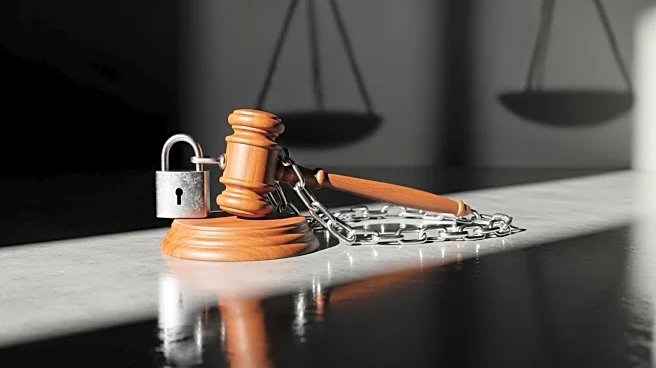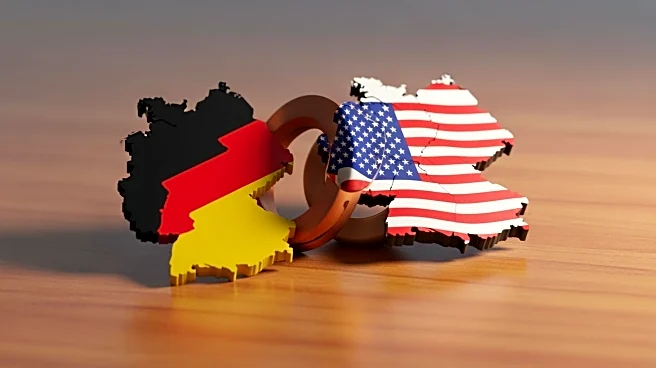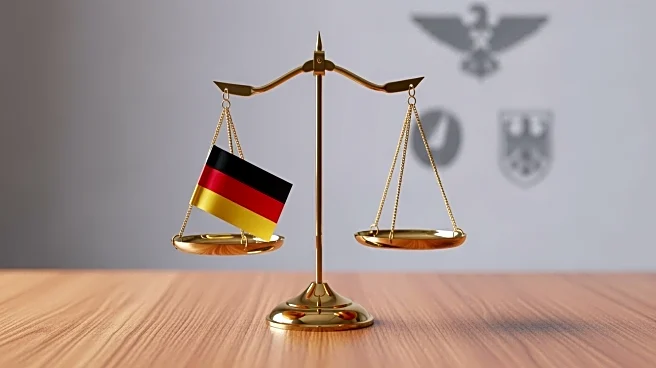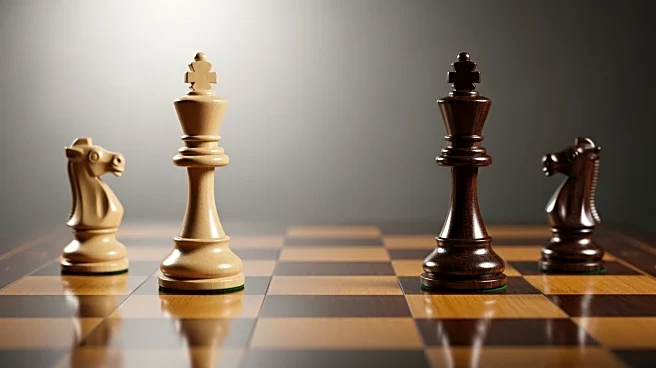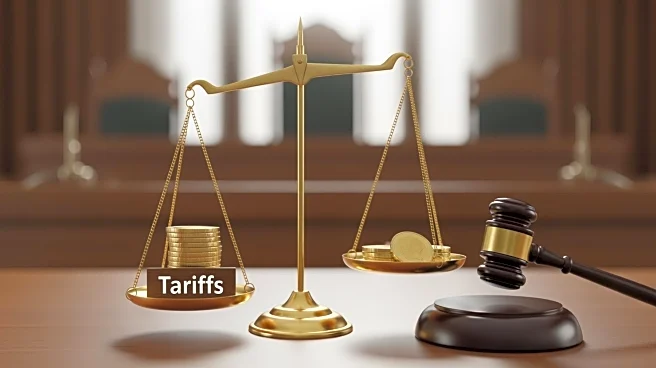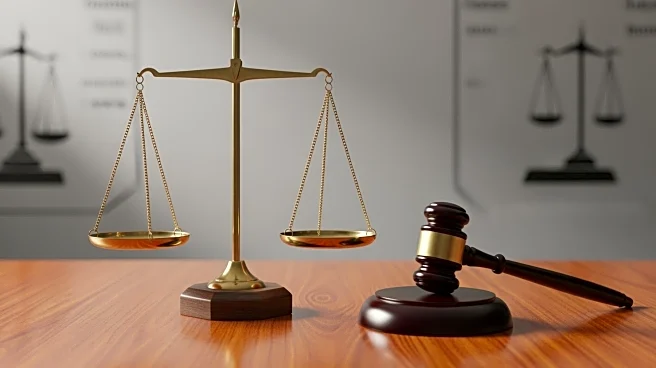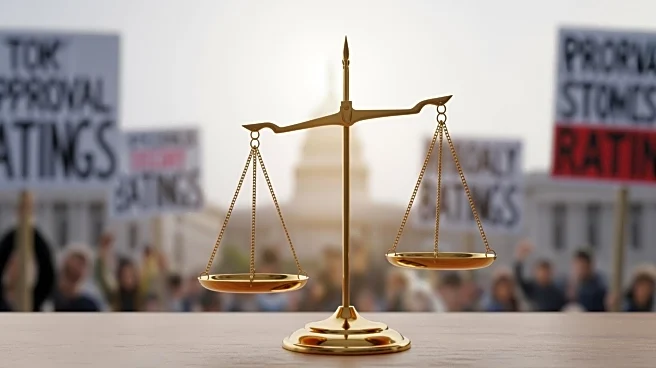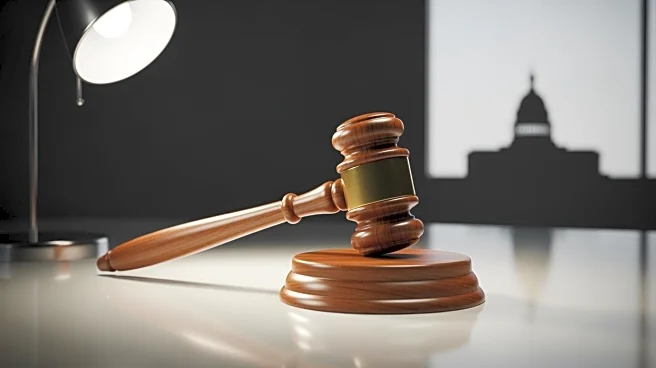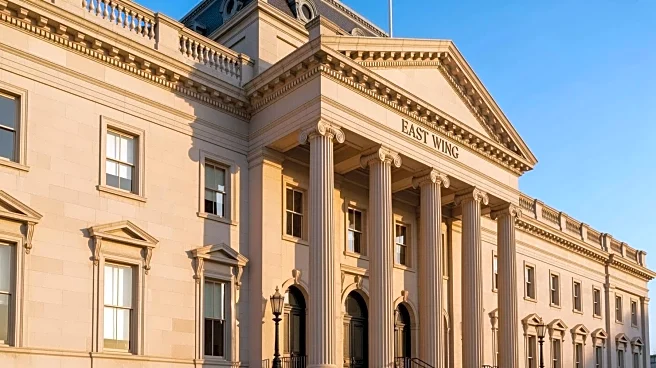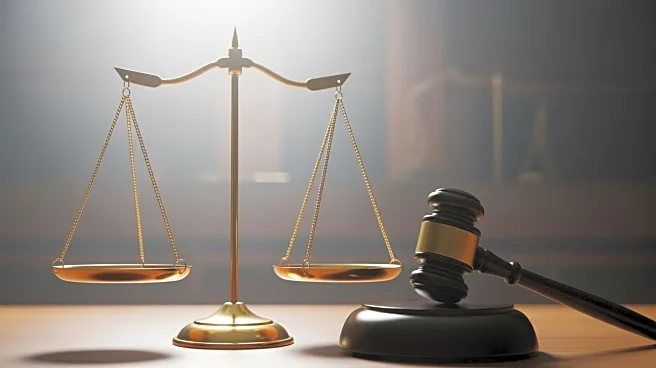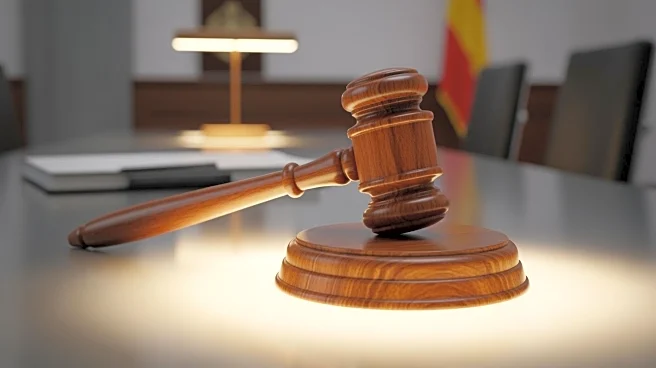What's Happening?
The federal government shutdown that began on October 1 has become the second-longest in U.S. history, characterized as both bizarre and difficult to resolve. Unlike previous shutdowns, which were driven by specific grievances such as tax policies or border
wall funding, this shutdown stems from a broader conflict over President Trump's approach to congressional authority. The immediate trigger was the expiration of COVID-era tax credits subsidizing health insurance premiums under the Affordable Care Act, which Democrats aim to extend. However, the core issue is President Trump's challenge to Congress's constitutional powers of taxation and spending. He has been accused of refusing to spend appropriated funds and raising revenues without congressional approval, including a controversial $130 million donation to fund military pay during the shutdown.
Why It's Important?
This shutdown underscores a significant constitutional conflict between the executive branch and Congress. President Trump's actions, such as raising tariff revenues and planning to allocate them without congressional consent, highlight a potential shift in the balance of power. This situation raises concerns about the erosion of legislative authority and the potential for executive overreach. The shutdown also affects public perception, with polls indicating that Americans largely blame Republicans for the impasse. The outcome of this conflict could have lasting implications for the separation of powers and the functioning of U.S. democracy, as it tests the limits of presidential authority and congressional oversight.
What's Next?
As the shutdown continues, negotiations are expected to focus on resolving the immediate issue of the Affordable Care Act subsidies. However, the broader constitutional questions remain unresolved. Democrats may push for legislative measures to reinforce congressional authority and prevent future executive overreach. The shutdown's resolution could also influence upcoming elections, as public opinion may sway against those perceived as responsible for the impasse. The situation remains fluid, with potential for further political and legal challenges as stakeholders navigate this complex constitutional landscape.
Beyond the Headlines
The shutdown highlights deeper issues regarding the balance of power in the U.S. government. President Trump's actions challenge traditional norms of governance and raise questions about the future of American democracy. The situation also reflects broader societal divisions, as the shutdown disproportionately affects certain regions and demographics. The ongoing conflict may prompt discussions about the need for constitutional reforms to address executive overreach and ensure effective checks and balances. This episode serves as a reminder of the importance of maintaining a robust and independent legislative branch to uphold democratic principles.
